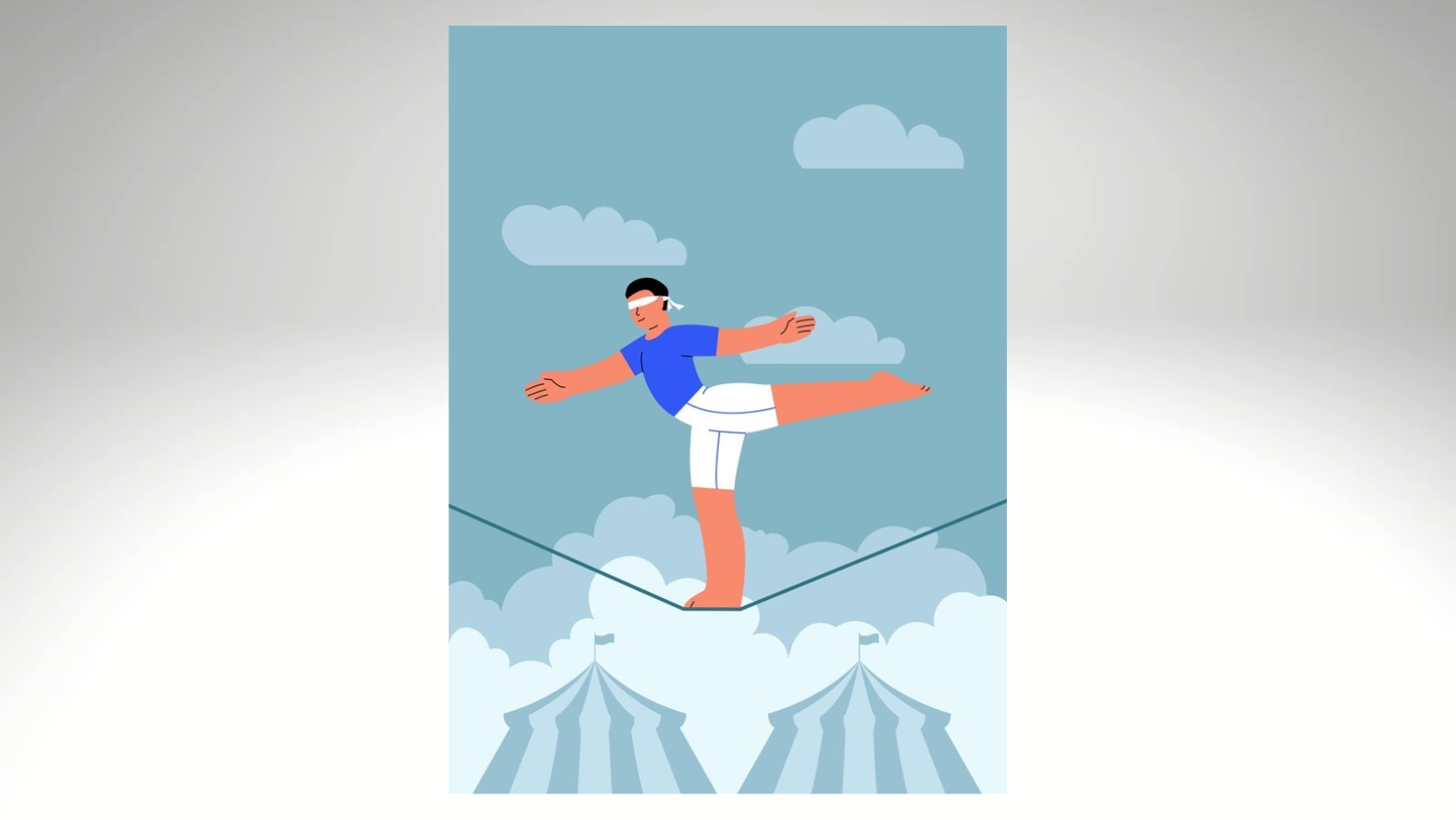
The Concise Oxford English Dictionary defines risk as follows: Situation involving exposure to danger. The possibility that something unpleasant will happen. This four-letter word is significant as it weighs a positive return against negative outcomes. In the entertainment industry, risk comes in many different forms.
Take Las Vegas, for example, where the iconic Cirque du Soleil acrobats perform astonishing acts high above the ground. Their ability to consistently deliver on expectations is hampered by the fact that the human form is prone to error despite protestations to the contrary. And yet, day after day, year after year, highwire acts, spectacular acrobatics, and death-defying stunts are performed to entertain audiences worldwide.
The risk/reward ratio in this paradigm certainly doesn’t warrant the potential downside for acrobats. However, many mitigating factors are in place to guard against unfavorable outcomes. These include maintaining a body in peak physical condition. Strength, flexibility, dexterity, skill, synergy, coordination, and precision are sacrosanct in this industry. Teamwork is dreamwork with acrobats, and trust forms the bedrock of every stunt performed before the crowds. Yet, accidents continue to occur.
This begs the question: What is the precise intersection of entertainment and economics when we analyze risk? At what point do the entertainers say the payoff is worth the risk? If we examine the benefits for high wire acts, trapeze artists, and world-class stunt people, opinions are mixed. It’s certainly worth digging into the numbers for some clarity on the risk/reward ratio.
- The typical resident shows perform 380–470 times every year
- Artists are expected to train an average of 12 hours per week
- Artists are offered one-or two-year contracts at competitive salaries
- Performers receive 4X complimentary tickets per year to any resident/touring Cirque du Soleil show
Various other benefits are provided, but they pale compared to the ones listed above. In terms of salaries, top-performing Cirque du Soleil artists can earn $110,000-$145,000 per year for a lead, while supporting performers earn between $33,000 per year and $55,000 per year. While certainly above the median annual salary, many people consider the risk/reward ratio unfavorable.
Skilled Competitors Tend to Mitigate Risk Better
Staying in Las Vegas, there are many other entertainment attractions that are inherently risky. We all know what they are, but some are less risky than others. Experts tell us to definitely check it out because there are attractions where the existence of skill-based elements reduces the house advantage.
A situation arises, particularly in certain types of games, where a skilled competitor has a better chance of coming out on favorable terms. Of course, the more skilled, adept, and practiced a competitor in certain types of entertainment pursuits, the better the chances of a player-positive outcome.
On the topic of risk, it is important to point out that it always exists. It can never be eliminated completely, given the possibilities. When competitors put themselves out there in a game situation, a competition, or a performance, variables come into play. These can work to the advantage of the competitor or to the disadvantage of the competitor.
From an economic and entertainment perspective, it’s always best to tweak the advantage in favor of the participant. This means preparing better, training harder, competing stronger, and using tactics and strategies to your advantage. Uncontrollable variables will always throw a wrench in the works, but probability analysis projects over the long term and establishes quantitative measures to assess the risk/reward ratio.
The Riskiest Entertainment Activities
The intersection of entertainment and economics is often hazy. Competitors routinely engage in entertaining pastimes with no quantifiable economic incentive. Consider these activities – extreme sports for the adrenaline junkies out there:

- Skydiving – a 2019 study found that 15 people died from 3.3 million jumpers. That’s one in every 220,301 people.
- Scuba diving is obviously a risky proposition for thrill seekers who are inexperienced or who face mechanical/technical failures with their gear.
- Rock climbing is a hazardous activity that many thrill-seekers participate in. Athletes have to be at peak physical performance, with iron grips on the rocks and a steely resolve to get back down again. It can be treacherous, and many rock climbers have plunged to their deaths over the years.
- Free climbing –this is an accident waiting for a place to happen. With free climbing, there are no supports, no guide ropes, and no safety nets.
- Bungee jumping: Those seeking an adrenaline rush typically turn to bungee jumping, jumping off bridges, cliffs, or buildings. If the cord snaps, paralysis or death is possible.
- Base jumping – is another dangerous activity in the entertainment realm. Many deaths have been recorded from base jumping – much more than skydiving.
- Canyoneering – is another inherently risky entertainment pursuit. Many people do this activity alone and risk getting lost, dehydrated, or stranded.
- Hang gliding – any time you can trust your safety to a device, the surrounding geography, and the weather, risk becomes a real consideration.
- Whitewater rafting—the wild river, the currents, the rocks, and the risk of drowning are always factors to consider with this entertainment pursuit. Many injuries have resulted from overturned rafts on the rapids.
- Ice climbing – is another hazardous activity that risk seekers actively engage in. It’s just like rock climbing, only it’s on ice. The problem with ice is that it cracks and breaks, and avalanches are possible. Many climbers have lost their lives in this entertainment pursuit.
On the face of it, the riskiest entertainment activities tend to have the lowest payouts. This is often a self-challenge for the self-actualization needed in Maslow’s hierarchy of needs. The attainment of many of these objectives usually lacks any financial incentive. The achievement of a goal and not a monetary reward drives many entertainment thrill-seekers. Food for thought!








